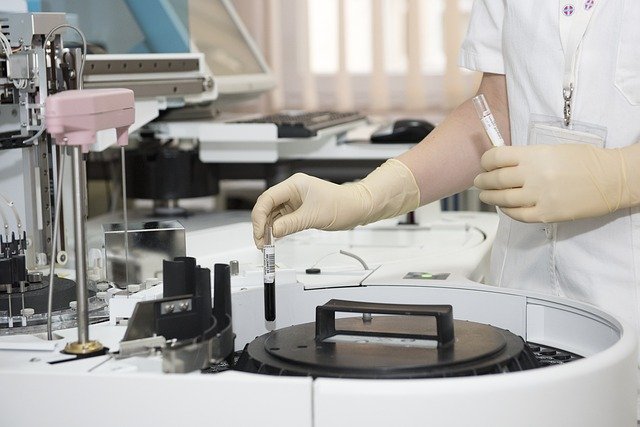Why Investing in High Quality Medical and Lab Supplies Matters
Healthcare facilities face critical decisions daily regarding the equipment and supplies they purchase. From diagnostic devices to laboratory tools, the quality of medical and laboratory supplies directly impacts patient outcomes, operational efficiency, and financial sustainability. High-quality medical equipment isn't merely a luxury—it's a fundamental necessity that affects every aspect of healthcare delivery. When healthcare providers make strategic investments in superior medical supplies, they're not only enhancing their capabilities but also reinforcing their commitment to exceptional patient care.

In healthcare environments across Indonesia and globally, the selection of medical and laboratory supplies represents more than a procurement decision—it forms the foundation of quality patient care. Facilities ranging from small clinics to major hospitals must balance immediate budget constraints against long-term operational needs. While lower-cost alternatives may appear attractive initially, the true value of medical supplies emerges through their performance in critical situations, their durability under constant use, and their contribution to overall healthcare delivery standards.
How Quality Enhances Safety and Reliability in Healthcare Settings
Patient safety depends fundamentally on the reliability of medical equipment and supplies. High-quality products undergo rigorous testing and certification processes that verify their performance under various conditions. Diagnostic equipment with precise calibration ensures accurate test results, reducing the risk of misdiagnosis. Sterile supplies manufactured to international standards minimize infection risks during procedures. Quality materials in surgical instruments maintain their integrity during critical operations, preventing equipment failure at crucial moments. Healthcare facilities that prioritize quality supplies experience fewer adverse events, lower complication rates, and improved patient confidence. The consistency of premium products also reduces variability in care delivery, allowing medical professionals to focus on treatment rather than compensating for unreliable equipment.
Understanding the Impact on Operational Efficiency
Operational efficiency in healthcare settings depends heavily on equipment reliability and performance consistency. High-quality medical supplies require less frequent replacement, reducing downtime associated with equipment failure. Laboratory instruments that maintain accuracy over extended periods eliminate the need for constant recalibration, saving technician time and maintaining workflow continuity. Durable examination tools withstand repeated sterilization cycles without degradation, extending their useful life. Quality supplies also reduce waste—accurate diagnostic tools minimize the need for repeat testing, while reliable consumables decrease product loss due to defects. Staff productivity improves when professionals can trust their equipment, reducing time spent troubleshooting problems or working around faulty supplies. These efficiency gains compound over time, creating significant operational advantages for facilities that invest in quality from the outset.
Calculating Long-term Cost Savings Through Quality Investments
While premium medical supplies command higher initial prices, their total cost of ownership often proves lower than budget alternatives. Quality equipment typically offers extended warranties, reducing repair and replacement expenses. Durable construction means fewer purchases over the equipment’s lifecycle. Energy-efficient designs in electronic medical devices lower utility costs. Accurate diagnostic tools reduce expenses associated with repeat testing and delayed diagnoses. Facilities should calculate total cost of ownership by considering purchase price, maintenance costs, expected lifespan, energy consumption, and potential costs of equipment failure. A quality autoclave costing 30% more initially but lasting twice as long with half the maintenance costs represents substantial savings. Similarly, premium diagnostic reagents that reduce false positives save costs associated with unnecessary follow-up procedures. Healthcare administrators should develop comprehensive cost models that account for these factors when evaluating supplier proposals.
Making Informed Purchasing Decisions
Effective procurement of medical supplies requires systematic evaluation beyond price comparison. Healthcare facilities should establish clear criteria including regulatory compliance, manufacturer reputation, product certifications, and performance specifications. Requesting product demonstrations allows hands-on assessment of usability and build quality. Reviewing clinical studies and peer feedback provides insights into real-world performance. Checking manufacturer support infrastructure ensures access to technical assistance and spare parts. Evaluating supply chain reliability prevents disruptions in critical supply availability. Facilities should also consider compatibility with existing systems—equipment that integrates seamlessly with current infrastructure reduces training requirements and implementation challenges. Creating vendor scorecards that track delivery reliability, product quality, and service responsiveness helps identify partners who consistently meet standards. Purchasing decisions should involve clinical staff who will use the equipment, ensuring selections meet practical workflow requirements.
Evaluating Vendor Partnerships and Support Services
The relationship with medical supply vendors extends beyond transactional purchases to ongoing partnerships that support healthcare delivery. Quality vendors provide comprehensive support including installation assistance, staff training, preventive maintenance programs, and responsive technical support. They offer transparent documentation about product specifications, safety protocols, and regulatory compliance. Reliable vendors maintain adequate inventory levels, ensuring consistent supply availability without extended lead times. They also provide clear communication about product updates, recalls, or safety notices. Healthcare facilities should assess vendor financial stability—established companies with strong track records are more likely to honor warranties and provide long-term support. Vendors who invest in customer relationships often offer value-added services such as equipment usage analytics, optimization consultations, and flexible financing options. Building partnerships with vendors who demonstrate commitment to healthcare quality creates supply chain resilience and supports continuous improvement in care delivery.
This article is for informational purposes only and should not be considered medical advice. Please consult a qualified healthcare professional for personalized guidance and treatment.
Conclusion
Investing in high-quality medical and laboratory supplies represents a strategic commitment to patient safety, operational excellence, and long-term financial sustainability. While premium products require greater upfront investment, their superior performance, reliability, and durability generate substantial returns through reduced complications, improved efficiency, and lower total ownership costs. Healthcare facilities that prioritize quality in their procurement decisions build stronger foundations for delivering consistent, safe, and effective care. By carefully evaluating products, calculating comprehensive costs, and developing partnerships with reputable vendors, healthcare administrators can make informed decisions that serve both immediate needs and long-term institutional goals.




